Discover why building a strong brand is essential for every startup. It helps establish credibility, attract customers, and drive growth. A cohesive brand strategy is vital to ensuring that all branding efforts work together to build credibility and drive growth. Learn key reasons to invest in brand development early.
Take Nectar, for example — a startup that didn't just launch, it landed. Even in the competitive, high-stakes world of Silicon Valley, Nectar knew from the outset that a bold brand identity would be its key to success.
While many tech startups get lost in a sea of sameness, Nectar leaned into consistent, global-ready branding that made them instantly recognizable and trustworthy. Their story is proof: investing in brand development early isn't just smart — it's essential for long-term success.
Identity, as it is called, helps to position the company and build trust and loyal customers. A strong brand fosters trust, loyalty, and lays a solid foundation for business growth and scaling. Therefore, to be successful, any startup must create a strong brand identity, with a particular emphasis on brand personality. Partnering with a startup branding agency can accelerate this process, making it faster, more strategic, and more impactful.
Mission Control empowers startups to transform their vision into compelling brand experiences, combining creative strategy, design, and venture support for lasting impact.
When Should Startups Begin Focusing on Branding
Branding is vital for any business, and for startups, knowing when to commence building your brand is crucial to growth and success. Early-stage branding is especially essential for startups to establish their presence and shape public perception before launch.
Although startup founders prioritize product improvement and securing early-stage funding, it is advisable to consider branding at the very least.
Aligning your startup's mission and vision with your brand values is essential, as these elements serve as guiding principles for your brand's actions.
Understanding your intended audience is also critical to ensure your branding resonates with the right market segment.
What Needs to be Done First?
In the Beginning: Make branding one of the key components of your startup vision at the first stage of proving the concept. This sets the tone for your company, and the messages are consistent. Clarify why your company exists as a core part of the initial branding process.
Source: Getty Images on Unsplash+

The Long-Term Benefits of Branding
When You Want to Promote Yourself: You don't need to advertise your product or its services as a lost opportunity. Having a strong brand allows you to position your business and, therefore, your message more easily to your audience. Consistent branding efforts across all channels help build brand recognition and create a positive impression with potential customers.
When constructing a brand, defining its characteristics at the outset of the business enables you to develop an effective advertising strategy and identify exemplary brand ambassadors who align with your goals.
To Gain Investor Trust: A strong and professional brand presence can inspire confidence in potential investors, signaling that your business is well-crafted and trustworthy. A successful brand identity also signals professionalism and reliability to investors.
To compete in the market, early branding enables you to carve out a niche and create a distinct identity, which is crucial in competitive industries.
By considering branding strategies from the startup's inception, they are being equipped with a strong foundation for long-term survival. Crafting a brand helps establish profound relationships with customers and other stakeholders from the outset. Ongoing branding efforts are crucial for maintaining a consistent and successful brand identity over time.
Understanding Startup Brand Psychology
Effective startup branding begins with understanding how people form emotional connections with new companies. A compelling brand story is key to forming an emotional connection with customers, investors, and talent.
Brand psychology provides the scientific foundation for creating brands that resonate deeply with these audiences. A well-crafted brand story helps communicate the company's values and mission in a way that resonates emotionally.
The Psychology of Brand Authenticity
Brand authenticity isn't just about being genuine; it's about being genuine. It's about being authentic. It's about systematically building trust through consistent actions, transparent communication, and values alignment.
Startup brand authenticity necessitates specific frameworks that accommodate rapid growth, limited resources, and evolving business models.
Authentic startup brands show vulnerability alongside capability. They demonstrate both vision and execution. This balance creates psychological safety for early adopters who want to support innovative companies but fear being disappointed by overpromising and underdelivering.
Brand authenticity frameworks help startups maintain genuine connections while scaling rapidly. These frameworks encompass authenticity audits, values-based decision-making processes, and systematic approaches to transparent communication that foster trust over time.
Source: freepik.es

Brand Emotional Intelligence Development
Brand emotional intelligence involves understanding and responding to the emotional needs of your customers, investors, and team members. For startups, this intelligence must work across multiple stakeholder groups with different emotional drivers and communication preferences.
Customer emotional intelligence focuses on understanding the deeper motivations behind purchase decisions. Early adopters seek different emotional rewards than mainstream customers. This requires startups to adapt their emotional positioning as they scale through various market segments.
Investor emotional intelligence involves understanding the psychological factors that drive funding decisions. Beyond financial returns, investors seek emotional rewards, such as being part of transformative companies, supporting visionary founders, and contributing to meaningful change.
Employee emotional intelligence helps startups build cultures that attract and retain top talent. Effective startup culture branding must strike a balance between the excitement of innovation and the stability people need to perform at their best.
Color Psychology and Visual Brand Psychology
Color psychology in branding goes beyond choosing appealing colors. It involves understanding how different colors trigger specific emotional and behavioral responses. For startups, strategic color choices can convey competence, innovation, trust, or energy, depending on the business objectives.
A strong visual identity, built from carefully chosen brand elements such as logo, colors, and graphics, helps create a memorable brand image that stands out in the market.
Startup color strategies should consider both immediate emotional impact and long-term brand evolution. Colors that work well for early-stage consumer engagement may not be suitable for B2B sales or international expansion. This requires systematic color planning from the beginning.
Visual brand psychology includes typography, imagery, layout, and design patterns that influence subconscious perceptions. Understanding these psychological principles enables startups to make informed design decisions that support business goals, rather than merely catering to aesthetic preferences.
Color Wheel Illustration by Clay
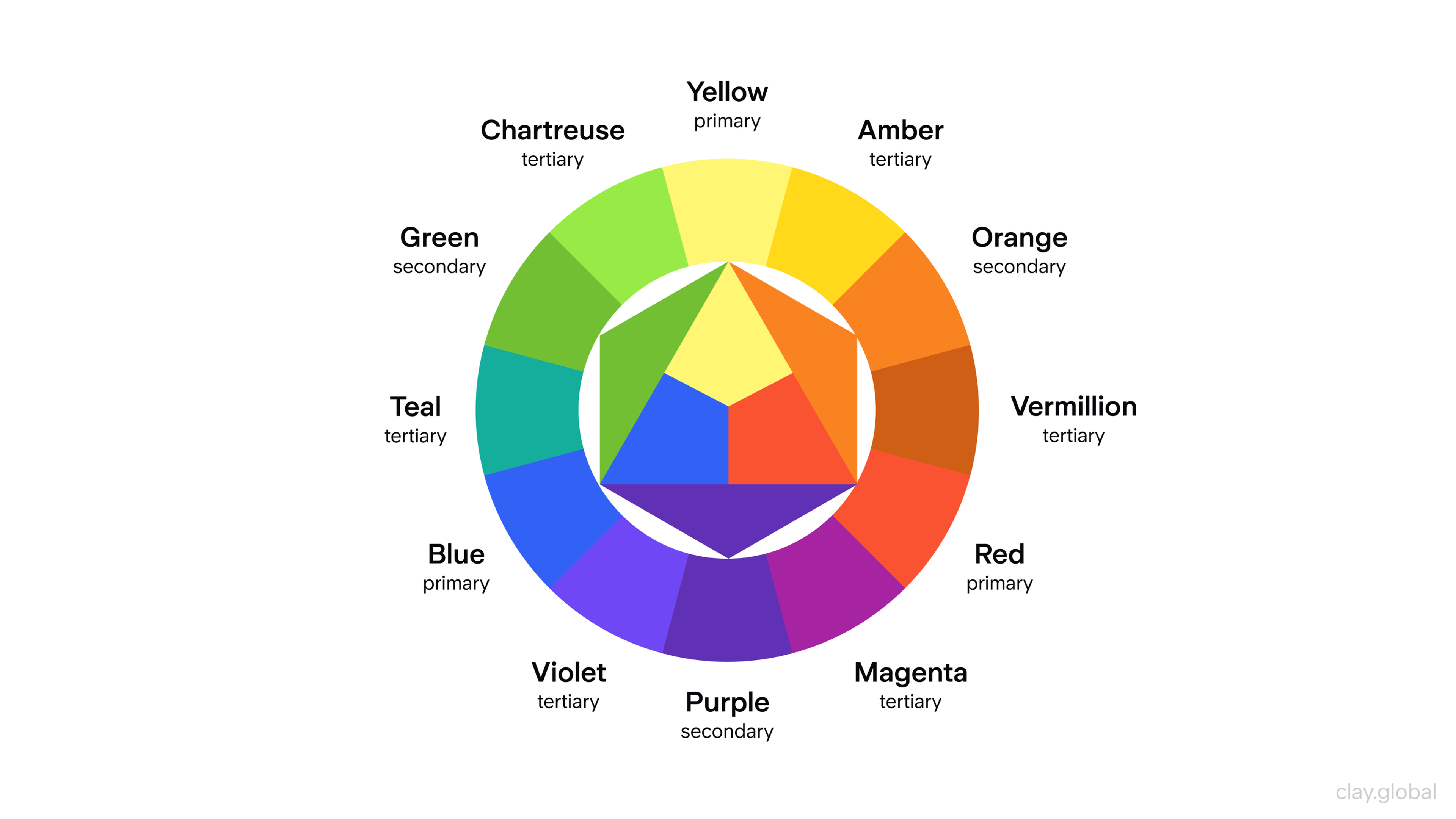
Building Startup Brand Architecture
Systematic brand architecture provides the structural foundation that supports consistent brand experiences across all touchpoints while enabling rapid scaling and evolution.
A solid brand is built on clear brand guidelines and a comprehensive style guide, which ensures consistency in visual identity and messaging throughout every interaction.
Startup Brand Architecture Framework
Brand architecture for startups must strike a balance between clarity and flexibility. It provides clear direction while allowing for rapid iteration and growth. This framework encompasses brand hierarchy, relationship mapping, and scalability planning that anticipates future business growth and evolution.
Master brand strategy defines how your startup's core brand relates to potential product lines, services, or business units. Even single-product startups benefit from architectural thinking that prepares for eventual diversification or acquisition scenarios.
Sub-brand development guidelines help startups maintain brand coherence as they launch new products or enter new markets. Clear architectural principles prevent brand confusion while supporting business growth and market expansion.
Brand positioning matrices provide systematic approaches to competitive positioning that go beyond simple differentiation. These matrices map emotional benefits, functional benefits, and brand personality across competitive landscapes to identify unique positioning opportunities.
Brand Architecture Examples
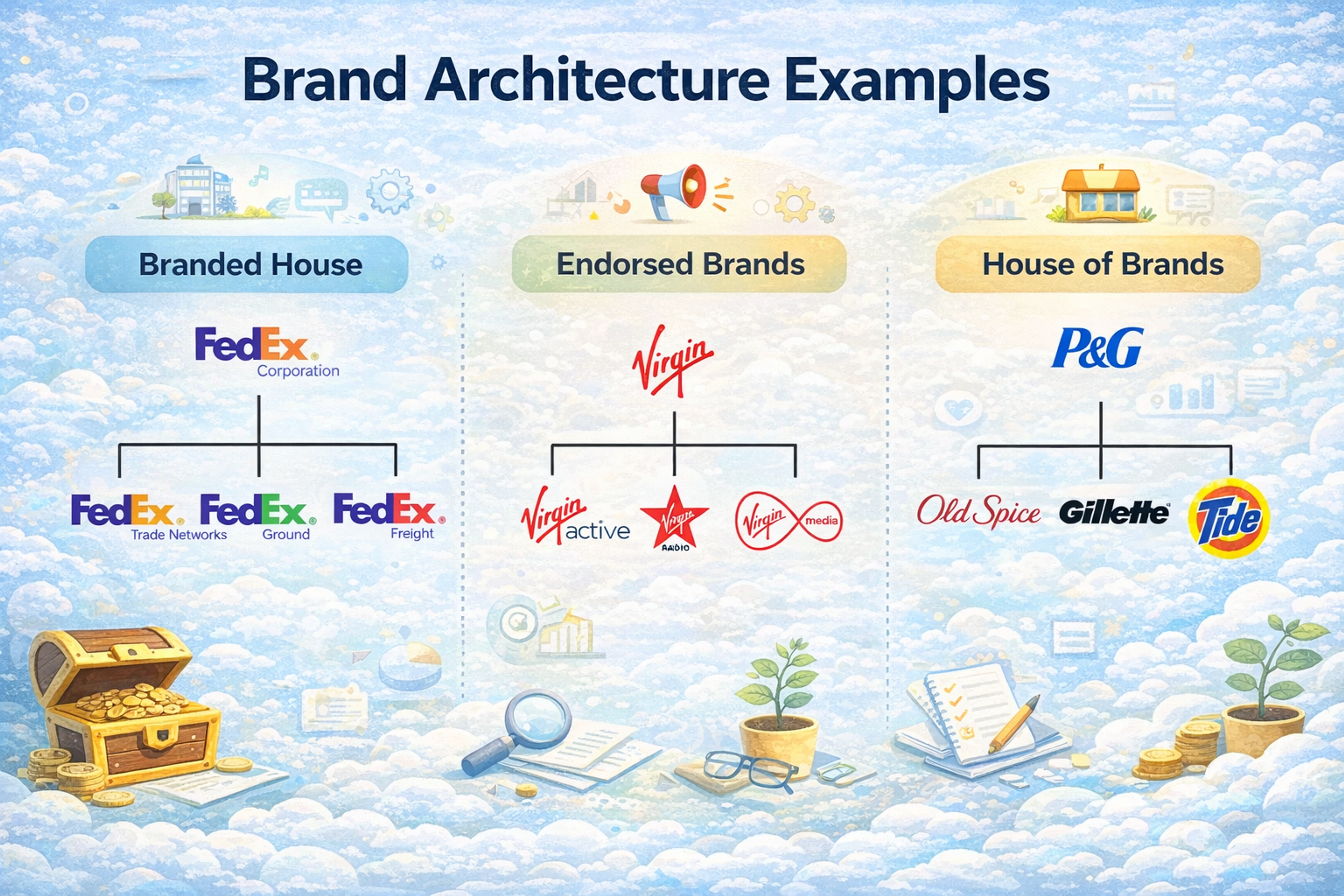
Startup Brand Maturity Planning
Brand maturity planning recognizes that startup brands evolve through predictable stages. Each stage requires different strategies, resources, and capabilities. Understanding these stages helps founders make appropriate branding investments at each growth phase.
- Early-stage brand focus emphasizes authenticity, the founder's story, and effective communication of product-market fit.
- Mid-stage branding adds systematic processes, team alignment, and scalable brand systems.
- Growth-stage branding necessitates sophisticated brand management, robust measurement systems, and consideration of international markets.
Brand evolution frameworks enable startups to navigate significant transitions, such as pivots, funding rounds, or market expansions, while preserving brand equity and fostering customer relationships. These frameworks include change management processes designed explicitly for brand transitions.
During these periods of change, it is crucial to keep the brand's identity and ensure clarity about what the brand stands for, so that the core values and messaging remain consistent and resonate with the target audience.
Brand scalability strategies ensure that early brand decisions support rather than constrain future growth. This includes technical infrastructure, design systems, and communication frameworks that work across different markets, channels, and business models.
Advanced Brand Strategy and Positioning
Strategic brand positioning for startups requires sophisticated frameworks that account for rapid market evolution, competitive dynamics, and resource constraints while building sustainable competitive advantages.
Developing an effective brand strategy that aligns with your overall marketing strategy and clearly communicates your unique selling proposition is essential for differentiating your startup and resonating with your target audience.
Strategic Brand Positioning Matrix
Advanced positioning matrices map startups against competitors across multiple dimensions. These include functional benefits, emotional benefits, brand personality, and market positioning.
In a crowded and competitive market, startups must analyze competitors' pricing models and positioning to stand out and succeed. These matrices reveal positioning opportunities that simple differentiation analysis might miss.
Competitive brand analysis for startups must account for both direct competitors and indirect alternatives that solve similar customer problems. Understanding the complete competitive landscape helps identify unique positioning territories and communication strategies.
Market positioning evolution planning anticipates how competitive landscapes will change as markets mature, new competitors enter, and customer needs evolve. Startups with evolutionary positioning strategies adapt more successfully to market changes.
Brand differentiation strategies should be both defensible and sustainable, rather than easily imitable. The most effective startup differentiation combines multiple elements that work together to create unique market positions.
Brand Alignment Strategy Development
Brand alignment strategies ensure that all business decisions support and strengthen brand positioning rather than undermining it. This alignment becomes increasingly crucial as startups grow and decision-making becomes more distributed.
Values-based decision-making frameworks help growing startups maintain brand consistency when founders can no longer personally make every decision. A strong internal culture and company culture play a crucial role in maintaining brand alignment, ensuring that team values and behaviors remain consistent with the overall brand strategy as the organization expands. Clear values and principles guide team members in making brand-aligned choices.
Brand governance systems establish processes for maintaining brand consistency across different teams, products, and markets. These systems should be sophisticated enough to ensure quality while remaining flexible enough to support rapid growth and expansion.
Cross-functional brand integration ensures that brand strategy influences product development, customer service, sales processes, and operational decisions. Integrated brand thinking creates more substantial competitive advantages than purely marketing-focused branding.
Brand Alignment Strategy
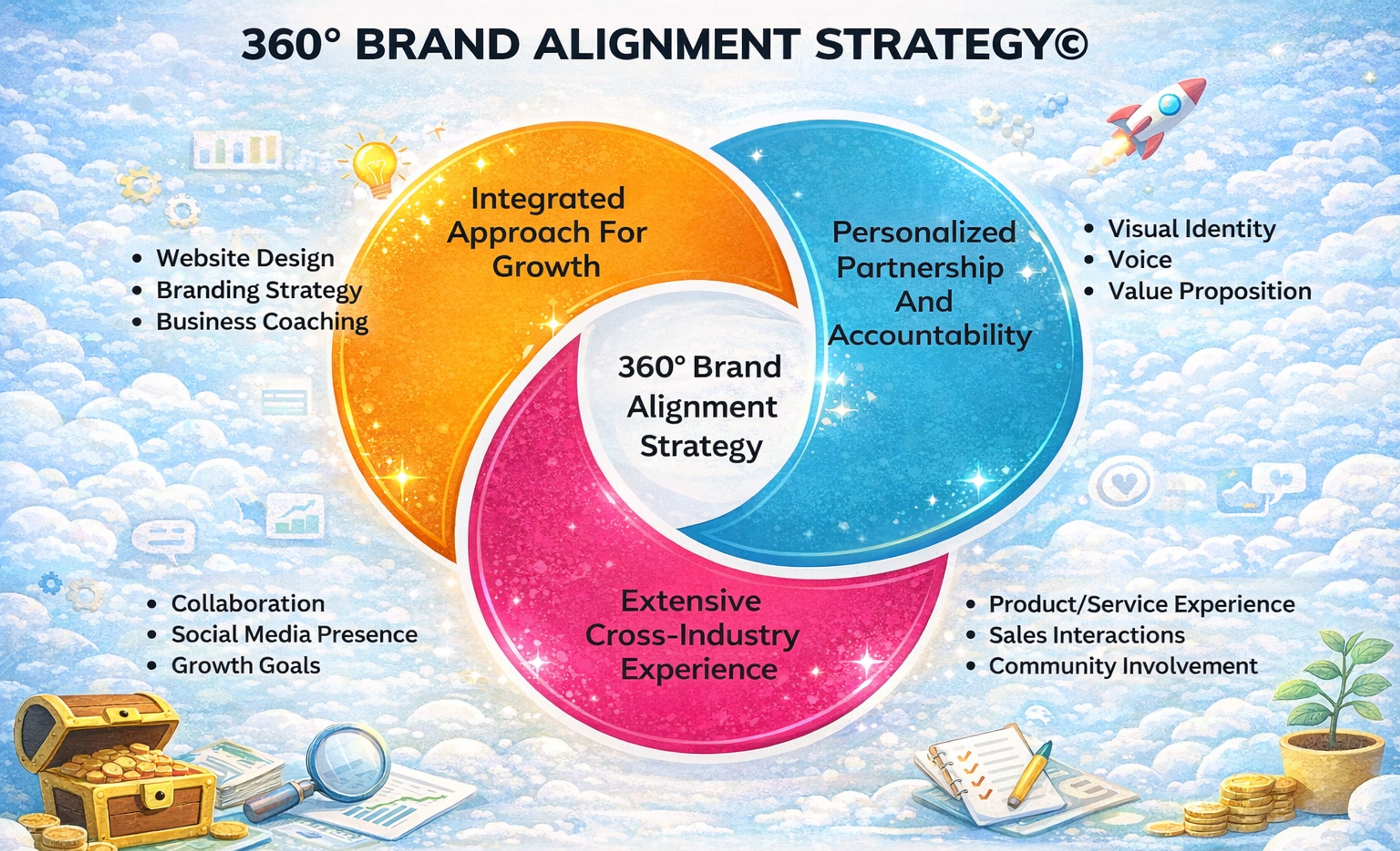
Brand Experience Mapping and Journey Design
Systematic experience design enables startups to create cohesive brand experiences that foster relationships and drive business results across complex customer journeys. By mapping the customer experience, startups can ensure that customers connect with the brand at every point of interaction.
Customer Journey Mapping for Startups
Customer journey mapping for startups must account for longer consideration cycles, multiple decision-makers, and high-touch onboarding processes that differ significantly from those of established companies.
Touchpoint optimization identifies and improves every interaction between customers and your startup brand. For startups, this optimization must prioritize high-impact touchpoints while building systematic improvement capabilities.
The experience mapping methodology provides a structured approach to documenting, analyzing, and improving customer experiences. These methods help startups identify optimization opportunities and track improvements in user experience over time.
Emotional journey mapping captures the emotional experience customers have while interacting with startup brands. Understanding emotional patterns helps optimize for psychological satisfaction alongside functional performance.
Customer Journey Mapping
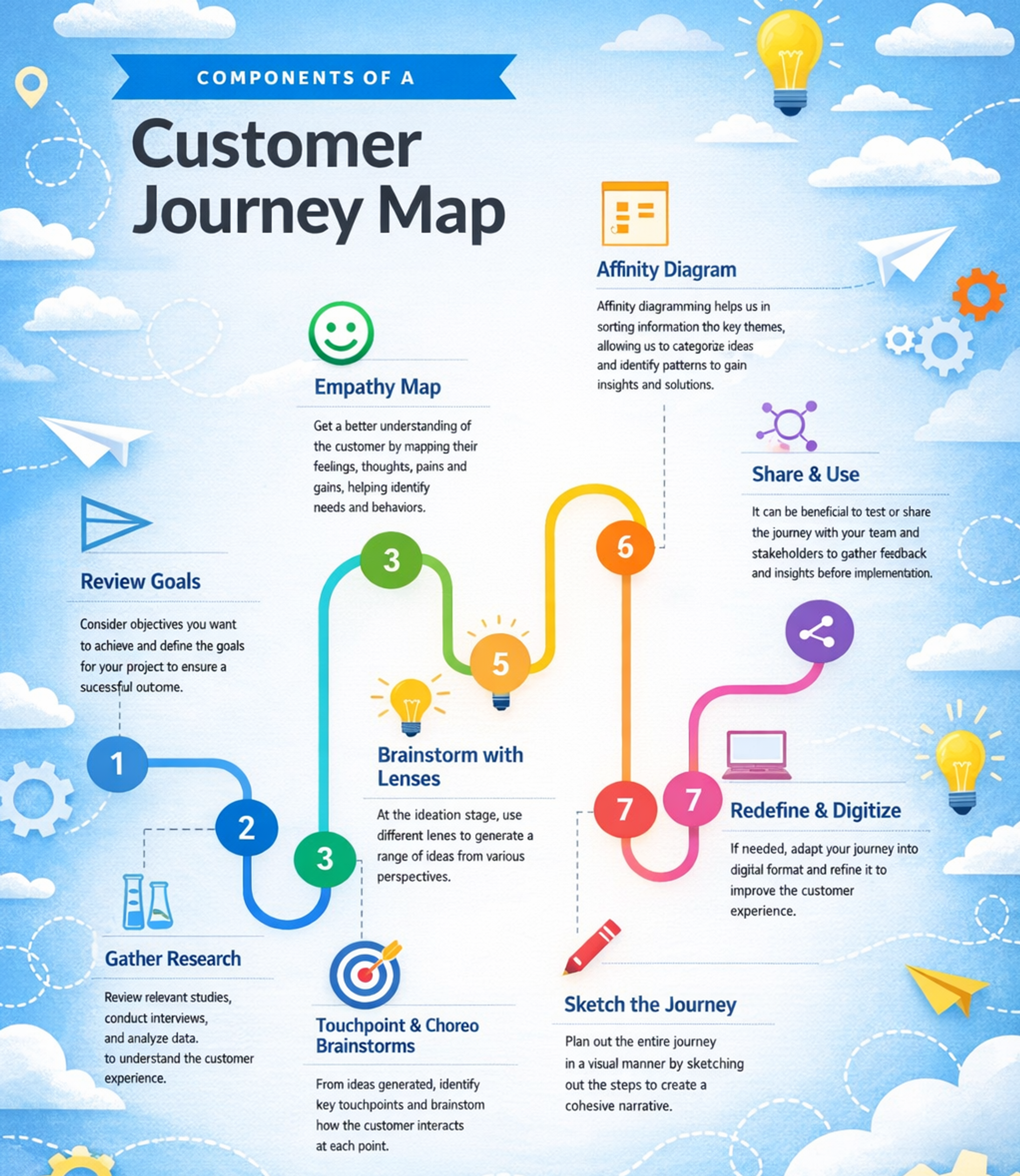
Brand Analytics and Intelligence Systems
Sophisticated measurement and analysis capabilities help startups make data-driven brand decisions while building competitive intelligence that informs strategic planning.
Branding is crucial for startups because it not only shapes customer perceptions but also helps position the company as an industry leader, enabling it to compete effectively and build lasting trust in its market.
Brand Sentiment Analysis and Monitoring
Brand sentiment analysis provides systematic monitoring of how customers, media, and other stakeholders perceive and discuss your startup brand. For startups, sentiment tracking reveals early warning signs and growth opportunities.
Social listening strategies help startups understand brand perception across social media, review sites, forums, and other online communities. Strategic social listening provides competitive intelligence alongside brand monitoring.
Sentiment measurement frameworks establish consistent approaches to tracking brand perception over time. These frameworks help startups understand perception trends and the impact of brand-building investments.
Brand perception metrics provide quantitative measures of brand health, awareness, preference, and advocacy. Understanding these metrics helps startups track brand progress and optimize brand investments.
Brand Sentiment
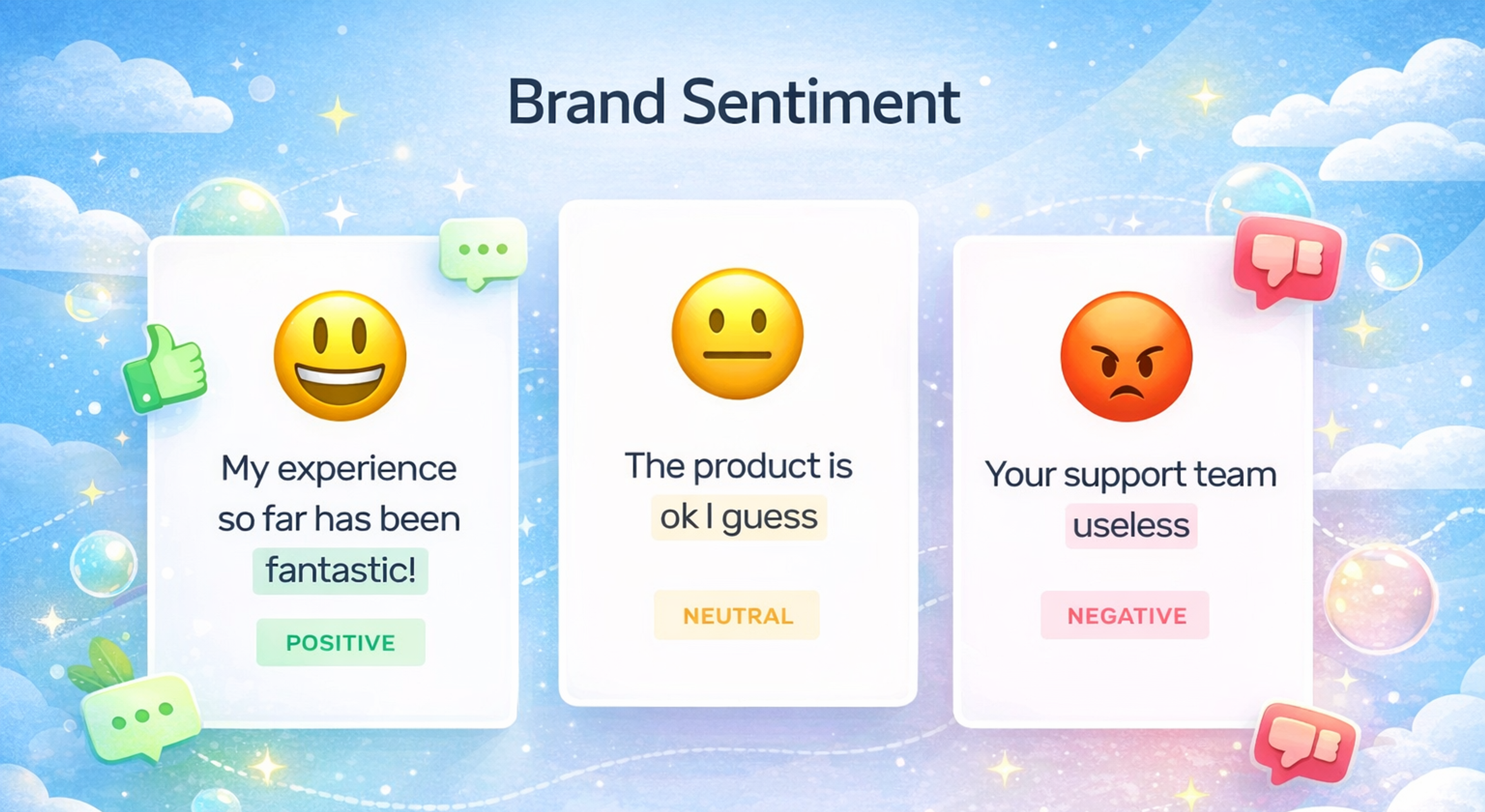
Competitive Brand Intelligence
Brand sentiment analysis provides systematic monitoring of how customers, media, and other stakeholders perceive and discuss your startup brand. For startups, sentiment tracking reveals early warning signs and growth opportunities.
Social listening strategies enable startups to understand their brand perception across various social media platforms, review sites, forums, and other online communities. Strategic social listening offers competitive intelligence in addition to brand monitoring.
Sentiment measurement frameworks establish consistent approaches to tracking brand perception over time. These frameworks help startups understand perception trends and the impact of brand-building investments.
Brand perception metrics provide quantitative measures of brand health, awareness, preference, and advocacy. Understanding these metrics helps startups track brand progress and optimize brand investments.
Case Studies: Using Branding to Drive Growth
Branding is key in business expansion, as evidenced in various sectors. Building brands through professional branding services can help startups achieve growth and market expansion by developing a strong brand identity and consistent messaging.
Companies can increase their market share and profits by constructing a comprehensive brand and fostering emotional attachments with customers. Let us now look at some unconventional ways effective branding strategies work.
Warby Parker
Warby Parker established a name for itself in the competitive eyewear market through its innovative and friendly branding and advertising. The company has captured the attention of many socially aware customers with its global campaign, which advertises the sale of eyeglasses under the slogan "Buy a Pair, Give a Pair."
Source: warbyparker

Allbirds
Allbirds positioned itself as the most comfortable shoe for eco-friendly consumers. Its ultra-minimalist design, coupled with natural materials and communicative branding, effectively enabled the company to occupy the niche for environmentally conscious consumers.
These cases demonstrate that with careful planning and execution, branding can enhance the credibility and marketability of smaller companies, underscoring the importance of investing in a brand identity.
Source: allbirds

Tools and Resources for Effective Startup Branding
Developing a strong and recognizable brand is critical for a startup's success. Well-designed marketing materials, which include visual elements and messaging, are essential components of a startup's branding strategy.
Startups can leverage printing services to produce branded marketing materials as part of a comprehensive marketing strategy, ensuring consistency and professionalism across all touchpoints.
They must be cohesive and reflect the brand's identity to effectively connect with the target audience and convey the company's values.
Below are some essential tools and resources that can help streamline the branding process:
Logo Design Tools
A professional logo is a fundamental element of any brand. Tools like Looka enable startups to create visually appealing logos that align with their brand identity.
Brand Strategy Resources
To define and refine your brand's mission, vision, and values, resources like HubSpot's Brand Development Guide provide frameworks and templates for building a cohesive strategy.
Consulting with a startup branding agency can provide valuable insights and expertise, helping startups navigate the complexities of branding and avoid common pitfalls.
While startup branding agencies offer branding services tailored specifically for startups, other branding agencies may focus on broader markets or established companies, making specialized agencies a better fit for the unique needs of startups.
Color and Font Pickers
Consistent use of colors and fonts sets the tone for your brand. Tools such as Coolors can help pinpoint palettes and typography that support your message.
Social Media Management Tools
An active social media presence is crucial for effective branding. Platforms like Hootsuite and Sprout Social help plan and schedule posts, ensuring a consistent voice across channels.
Digital Asset Management
Efficiently managing your branding assets ensures consistency in your outreach. Tools like Brandfolder and Bynder help centralize assets, such as logos, brochures, and templates, for easy access and management.
Source: brandfolder

Website Builders
A well-designed website is a digital storefront for any brand. Tool like Squarespace offer user-friendly options for startups to create their online presence.
Analytics and Feedback Tools
Understanding what resonates with your target audience is key to refining your brand. Tools like SurveyMonkey and Hotjar provide insights to measure branding effectiveness and gather feedback.
Feedback from early customers, combined with thorough market research, is crucial for refining branding and messaging to ensure they align with audience needs and expectations.
By leveraging these tools and resources, startups can establish a strong, memorable brand that resonates with their audience and supports long-term growth.
Read more:
FAQ
What Branding Does My Startup Need?
A startup needs a clear positioning statement, a memorable name, a simple visual identity, a consistent voice, and a website that effectively communicates its value. Early branding should focus on clarity and trust more than complex design systems.
How Much Should A Startup Spend On Branding?
Most early-stage startups allocate between 5% and 15% of their initial marketing budget to branding. A lean starter brand kit can cost a few thousand dollars, while complete strategy and identity work typically increases in cost with the depth of research and deliverables.
When Should A Startup Think About Branding?
Start thinking about branding as soon as you know who you serve and why your product matters. Branding becomes essential before building a website, pitching investors, launching campaigns, or entering competitive markets.
Which Company Offers The Best Startup Branding?
The best agency is the one that understands early-stage constraints, works efficiently, and can demonstrate both measurable outcomes and visuals. Look for teams with proven startup experience, strong strategy, and flexible, phased pricing.
How To Do Branding For A Startup?
Define your target audience, clarify your value proposition, choose a name and voice, create a simple visual identity, and build a website that clearly communicates your offer. Keep everything consistent across touchpoints and update the brand as you learn from real customers.
How To Choose A Branding Agency For A Startup?
Choose an agency with relevant case studies, a clear discovery process, transparent pricing, and experience working with early-stage teams. Ask how they research users, how they test concepts, and who actually does the work. The right partner should help you focus your message, not complicate it.
Conclusion
Strong brands aren't built to look good — they're built to last. Investing in your brand is one of the smartest moves you can make, because it pays off in tangible, lasting ways: recognition, trust, loyalty, and long-term growth.
Even if you're a scrappy startup with limited resources, you don't need a massive budget to make a significant impact. With clear values, consistent messaging, and a dash of creativity, you can carve out a space in the market that's truly your own.
It's about showing up with purpose, speaking your audience's language, and delivering something that resonates. When you do that, your brand becomes more than a name — it becomes a movement people want to be part of.


About Clay
Clay is a UI/UX design & branding agency in San Francisco. We team up with startups and leading brands to create transformative digital experience. Clients: Facebook, Slack, Google, Amazon, Credit Karma, Zenefits, etc.
Learn more

About Clay
Clay is a UI/UX design & branding agency in San Francisco. We team up with startups and leading brands to create transformative digital experience. Clients: Facebook, Slack, Google, Amazon, Credit Karma, Zenefits, etc.
Learn more


